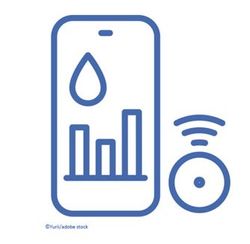© 2025 MJH Life Sciences™ , Patient Care Online – Primary Care News and Clinical Resources. All rights reserved.
Monu Khanna, MD, on the Unique Role of Primary Care in Managing Cardiometabolic Disease
Dr Khanna discusses how PCPs can use patient relationships to tailor lifestyle advice and manage obesity-related cardiometabolic disease.
That is a question Patient Care editors asked Monu Khanna, MD, a board-certified obesity medicine and internal medicine expert, in a recent interview. In the video above, Dr Khanna highlights the central role that primary care physicians play in the prevention and management of obesity-related cardiometabolic disease. Drawing from her own experience in primary care, Dr Khanna explains how long-term patient relationships allow clinicians to connect medical guidance with personal interests and daily routines. She also discusses the importance of personalized lifestyle recommendations, early lab-based screening, and patient trust—tools that primary care clinicians can leverage to help prevent chronic disease before it starts.
Dr Khanna is also the current chair of the Obesity Medicine Association’s Diversity, Equity, and Inclusion Committee.
The following transcript has been edited for clarity, flow, and style.
Patient Care: How can primary care physicians address prevention and management of obesity-related cardiometabolic diseases with their patients?
Monu Khanna, MD: Primary care providers are really the heart and soul of our healthcare system. It’s a tough role—I’ve been in that role, and I know how challenging it can be. But it can also be incredibly impactful because you have the privilege of knowing your patient over time.
Even if you’re seeing them once or twice a year—if they’re relatively healthy—or more often if they have multiple medical issues, you get to know them. You learn their backstory. You know what they did before retirement, what gives them purpose. That relationship is powerful.
As a primary care provider, knowing your patient allows you to connect their health needs to their lifestyle. For example, maybe they don’t have access to a gym, or they’re a senior dealing with chronic pain and can’t exercise regularly. But you also know they love gardening. That’s an opportunity.
Encouraging them to spend time outside, tending their garden, soaking up some vitamin D—that’s movement. It’s physical activity that doesn’t feel like formal exercise. Bending, weeding, mulching—what some call "farm fitness"—uses muscles and gets them moving in a way that brings peace and joy. That’s a connection only a primary care provider can make. You know their health history and who they are as a person.
So when you say, “Maybe you can’t walk 30 minutes a day, but how about spending 30 minutes in your garden?”—that advice lands. It’s specific, actionable, and personal.
Primary care clinicians also play a critical role when it comes to labs and early detection. You’re the one ordering lipid panels, reviewing hemoglobin A1c results, and spotting early signs of prediabetes. You’re in a trusted position, and you have the ability to guide meaningful lifestyle changes before disease fully develops.
If we can continue to support and educate our primary care providers on how to make those personalized connections, we can create real, lasting impact for our patients.
For more of our conversation with Monu Khanna, MD, check out:



